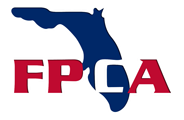Background
The SR 417 Boggy Creek Road Interchange project was a four-level interchange with flyover ramps that connect the adjacent high speed highway to the nearby airport’s access road. The precaster facilitated project phasing by providing shipping for the precast segements and manufacturing specific segment lengths in order to allow for easier construction next to the fourth busiest airport for domestic travel in the US. The end result was improved traffic flow where airport traffic usually meets the local traffic on the highway. Three of the bridges were designed as post-tensioned curved concrete U-beam bridges making it the first of its kind in Florida.
Design Challenges
-
Constructing the flyover ramps within an existing busy South Airport Entrance, the fourth busiest airport for domestic travel in the US. Phasing of the flyover ramps required careful consideration of segment lengths and shoring locations. The precaster helped facilitate phasing by providing for shipping of large segments up to 110’ in length.
-
Overcoming the lack of forming systems available for the PCI Zone 6 U-girders. The precaster worked with a local steel fabrication and form company to design a re-usable forming system. The system was developed after visits with precasters in Colorado. Costs for the system were absorbed by the precaster in order to provide competitive bids to the steel box girder alternate.
-
Assembling a design team with the necessary skills for the time-dependent, phased, post-tensioning analyses. The design firms tapped segmental/U-Girder expertise in Colorado to help train staff in the U-girder analyses. The precaster helped through participation in a technology transfer with Colorado based precasters and designers.
-
Selecting the software for the complex analyses. RM Bridge, MIDAS, and SAP 2000 were selected due to their flexibility to handle all potential phasing possibilities and post-tensioning schemes. The design team’s experts had successfully used these programs on past similar projects. The precaster helped confirm the design during shop drawing preparation.
-
A structural system that could handle the flyover ramp curvature and geometry. PCI Zone 6 girders were capable of handling the smallest radius of 955’. The precaster facilitated constructing the curved girders through the development of adjustable radius formwork.
-
Design of the girders to be lifted out of the form system without the use of post-tensioning. Due to form curvature, post-tensioning of the girders systems in the formwork was not feasible. The design team developed a scheme to add additional mild reinforcement to keep lifting stresses to levels that minimized any cracking. The precaster revised the lifting and shipping scheme to fit their equipment and processes and added additional mild steel to further minimize cracking potential. No discernable cracks were realized during the lifting or shipping process.
-
Design of blisters or anchorages for intermediate post-tensioning locations. Strut & Tie modeling was used to develop reinforcement at intermediate blisters/anchorages. The original design had a tapered shape at each web, which resulted in crowded reinforcement placement. The contractor and fabricator re-designed the blisters to be constant depth and connect between webs to reduce overall stress, improve load distribution, and simplify fabrication.
-
Placement of pull-out reinforcement in the curved webs. The original design had a “hat” shape with legs that made placement more complicated. Working with the fabricator, the design team re-designed the “hat” bars into a u-shape that was effective at carrying the pull out forces and easier to place.
-
Designing and detailing girder radii for the superelevation transitions. The original design was optimized by matching radii between box girders within a given span and reducing the number of different radii. The precaster was able to further reduce the number of radii to optimize fabrication.
-
Design of girder ends to accommodate post-tensioning jacks. “Tongues” were used at the end of each expansion segment to facilitate jacking and later placement of diaphragms. The length of the “tongue” extensions from the bottom flanges provided the space for jacks. The contractor and pre-caster resized the tongues to fit their preferred jack system.
-
Design for high compression forces in the bottom flanges over pier supports. The bottom flange was thickened over pier supports to carry the additional compression loads. The precaster formed the flanges the typical thickness over the piers with reinforcement projecting to interface with a later cast-in-place pour by the contractor in the field to get the final flange thickness. This method helped reduce shipping weight.
-
Providing transverse restraint at girder ends and transmitting loads to bearings. Diaphragms with transverse post-tensioning were used to facilitate shear transfer. The transverse PT accommodated the loads, while reducing crack potential. The original design utilized PT bars. PT bars have limited flexibility. Due to the need to thread the PT bars through holes in the girders webs and difficulty of aligning the webs, the contractor and precaster suggested using strand instead. The strand allowed more tolerance for mis-alignment of the girder web holes between adjacent u-girders.
-
Skewed piers in the creek crossing and median of the highway. Skewed piers provided a detailing challenge in the u-girders for transferring forces to the bearings. It was overcome by provided two sets of perpendicular diaphragms, each starting at one of the skewed bearings. The precaster provided the necessary attachments for these non-standard diaphragms.
Photos via Dewberry Engineers, Inc
SR 417 BOGGY CREEK ROAD INTERCHANGE
Location:
Central Florida Expressway Authority
Orlando, FL
Schedule:
Project Start: 9/2013
Project Completion: 3/2016
Cost:
Total Project Cost: $71 million
Total Cost of Precast: $33.7 million
Square Feet: 180,000 SF
Involved Companies
Precast Concrete Producer
Dura-Stress
11325 County Road 44
Leesburg, FL 34788
Precast Specialty Engineer
Summit
10822 W Toller Drive
Littleton, CO 80127
General Contractor
SEMA Construction
6200 Hazeltine National Dr
Orlando, FL 32882
sema.inc





